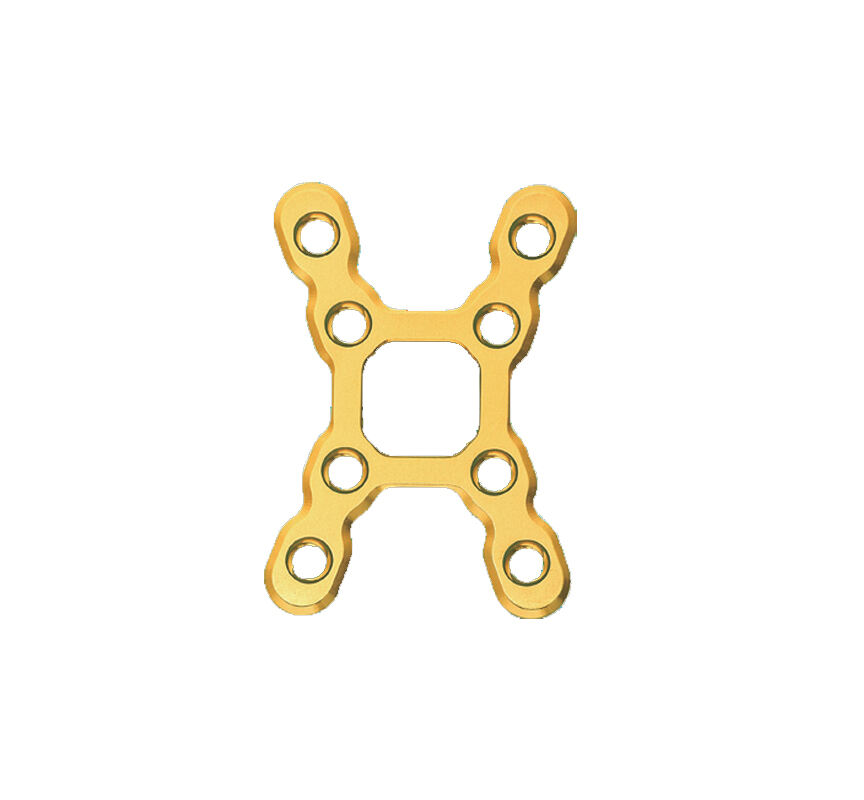Definition and Purpose
Trauma locking plates are specialized medical devices designed to stabilize fractured bones. These plates serve as a bridge, holding broken bone fragments in place while your body works to heal naturally. Unlike traditional plates, trauma locking plates use a locking mechanism that secures screws at fixed angles. This feature ensures that the plate and screws function as a single unit, providing rigid support to the fracture site. By maintaining stability, these plates create an optimal environment for bone healing and reduce the risk of complications like misalignment or delayed union.
Key Features of Trauma Locking Plates
Trauma locking plates stand out due to their innovative design and functionality. Here are some of their key features:
- Fixed-Angle Screw Placement: The locking mechanism allows screws to remain securely fixed at specific angles. This feature minimizes movement at the fracture site, ensuring proper alignment during healing.
- Versatility: These plates accommodate both locking and conventional screws, making them adaptable for various fracture types and surgical techniques.
- Reduced Bone Contact: The design minimizes direct contact with the bone, which helps preserve blood supply and reduces the risk of bone damage or osteoporosis near the plate.
- Durability: Made from strong materials like titanium or stainless steel, trauma locking plates provide long-lasting support even under significant stress.
These features make trauma locking plates a reliable choice for treating complex fractures and ensuring effective recovery.
Types of Trauma Locking Plates
Trauma locking plates come in different types, each tailored to specific needs. Some common types include:
- Compression Plates: These plates apply pressure across the fracture site, promoting faster healing by encouraging bone fragments to join tightly.
- Bridge Plates: Used for complex fractures, these plates span the fracture site without directly compressing it, preserving the natural healing process.
- Anatomical Plates: Designed to match the shape of specific bones, such as the femur or humerus, these plates ensure a precise fit and better stability.
- Mini Plates: Ideal for smaller bones or delicate fractures, mini plates provide targeted support without adding unnecessary bulk.
Each type of trauma locking plate addresses unique challenges, ensuring that surgeons can choose the most effective option for your specific injury.
How Trauma Locking Plates Work
Mechanics of Stabilizing Fractures
Trauma locking plates stabilize fractures by creating a rigid framework around the broken bone. The locking mechanism secures screws at fixed angles, ensuring that the plate and screws act as a single, unified structure. This design prevents unwanted movement at the fracture site, which is critical for maintaining proper alignment. When the bone fragments stay in place, your body can focus on healing without interference. The stability provided by these plates also reduces the risk of complications, such as delayed union or misalignment, which can hinder recovery.
Role in Promoting Natural Bone Healing
Trauma locking plates support your body’s natural healing process by providing the ideal environment for bone regeneration. The fixed-angle screws minimize micro-movements at the fracture site, allowing new bone tissue to form undisturbed. These plates also facilitate interfragmentary compression, which encourages the bone fragments to join together more effectively. By reducing the gap between the broken pieces, the plates promote callus formation—a crucial step in bone healing. This process ensures that your body can repair the fracture efficiently and restore the bone’s strength.
Integration with the Body’s Healing Process
Trauma locking plates integrate seamlessly with your body’s healing mechanisms. Their design minimizes direct contact with the bone, preserving the blood supply around the fracture site. This feature helps maintain the biological environment necessary for healing. The materials used, such as titanium or stainless steel, are biocompatible, meaning they work harmoniously with your body’s tissues. Over time, as the bone heals and regains its strength, the plate continues to provide support without interfering with the natural process. This integration ensures a smoother recovery and better long-term outcomes.
Benefits of Trauma Locking Plates
Improved Stability and Alignment
Trauma locking plates provide unmatched stability for fractured bones. Their fixed-angle screw mechanism ensures that the bone fragments remain securely aligned throughout the healing process. This stability prevents unwanted movements that could disrupt the natural repair of your bone. By maintaining proper alignment, these plates help your body rebuild the bone structure accurately. This precise alignment reduces the chances of deformities or long-term complications, ensuring a smoother recovery. You can trust trauma locking plates to create the foundation your body needs for effective healing.
Reduced Risk of Complications
Using trauma locking plates significantly lowers the risk of complications during bone healing. The design minimizes direct contact with the bone, preserving the blood supply around the fracture site. This feature reduces the likelihood of bone damage or osteoporosis near the plate. Additionally, the rigid fixation provided by these plates prevents issues like delayed union or nonunion, where the bone fails to heal properly. With trauma locking plates, you benefit from a safer healing environment that supports your body’s natural processes. This reduces the need for additional surgeries or prolonged treatments.
Faster Recovery and Rehabilitation
Trauma locking plates accelerate your recovery by creating an optimal environment for bone healing. The stability they provide allows your body to focus on regenerating bone tissue without interference. These plates also promote interfragmentary compression, which encourages faster callus formation—a critical step in the healing process. As a result, you can regain mobility sooner and begin rehabilitation earlier. Faster recovery means you can return to your daily activities and enjoy an improved quality of life in less time. Trauma locking plates ensure that your journey to recovery is both efficient and effective.
Comparison with Other Bone Fixation Methods
Traditional Plates and Screws vs. Locking Plates
Traditional plates and screws have been widely used in fracture treatment for decades. These systems rely on the friction between the plate and the bone to stabilize fractures. However, this approach often compresses the bone excessively, which can disrupt blood flow and slow down healing. Traditional plates also depend heavily on the quality of the bone for stability. If the bone is weak or osteoporotic, the screws may loosen over time, leading to complications.
Trauma locking plates offer a more advanced solution. Their locking mechanism secures screws at fixed angles, creating a stable construct that does not rely on bone quality alone. This feature reduces the risk of screw loosening and ensures consistent support throughout the healing process. Unlike traditional plates, locking plates minimize direct contact with the bone, preserving the blood supply and promoting faster recovery. These advantages make locking plates a superior choice for treating fractures, especially in patients with compromised bone health.
Advantages of Locking Plates Over External Fixation
External fixation involves stabilizing fractures using pins or wires connected to an external frame. While effective in certain cases, this method has limitations. External fixators are bulky and can restrict your movement, making daily activities challenging. They also expose the fracture site to the external environment, increasing the risk of infection.
Locking plates eliminate these drawbacks. They are implanted internally, providing discreet and stable support without interfering with your mobility. The fixed-angle screws in locking plates ensure precise alignment of the bone fragments, which external fixators may struggle to achieve. Additionally, locking plates create a closed environment around the fracture site, reducing the risk of infection and promoting a cleaner healing process. These benefits highlight why locking plates are often preferred over external fixation for managing fractures.
Why Locking Plates Are the Preferred Choice
Locking plates have become the preferred choice for fracture treatment due to their innovative design and reliable performance. They provide unmatched stability by securing screws at fixed angles, ensuring that the bone fragments remain aligned during healing. This stability reduces the risk of complications like delayed union or nonunion, which can prolong your recovery.
The versatility of locking plates also sets them apart. Surgeons can use them with both locking and conventional screws, allowing for customized treatment based on the type and location of the fracture. Their ability to preserve the blood supply around the fracture site further enhances the healing process, making them suitable for complex and challenging cases. Whether you have a simple fracture or a more severe injury, trauma locking plates offer a dependable solution that supports your body’s natural healing process.
Trauma locking plates have transformed the way fractures heal. They provide unmatched stability, ensuring your bones stay aligned throughout recovery. Their innovative design minimizes complications, allowing your body to heal naturally and efficiently. By promoting faster recovery and reducing risks, these plates have become a cornerstone of modern orthopedic care. Whether you face a simple fracture or a complex injury, trauma locking plates offer a reliable solution that supports your journey to full mobility. Trust in their proven effectiveness to help you regain strength and return to your daily life.
 EN
EN
 FR
FR
 ES
ES
 AR
AR

